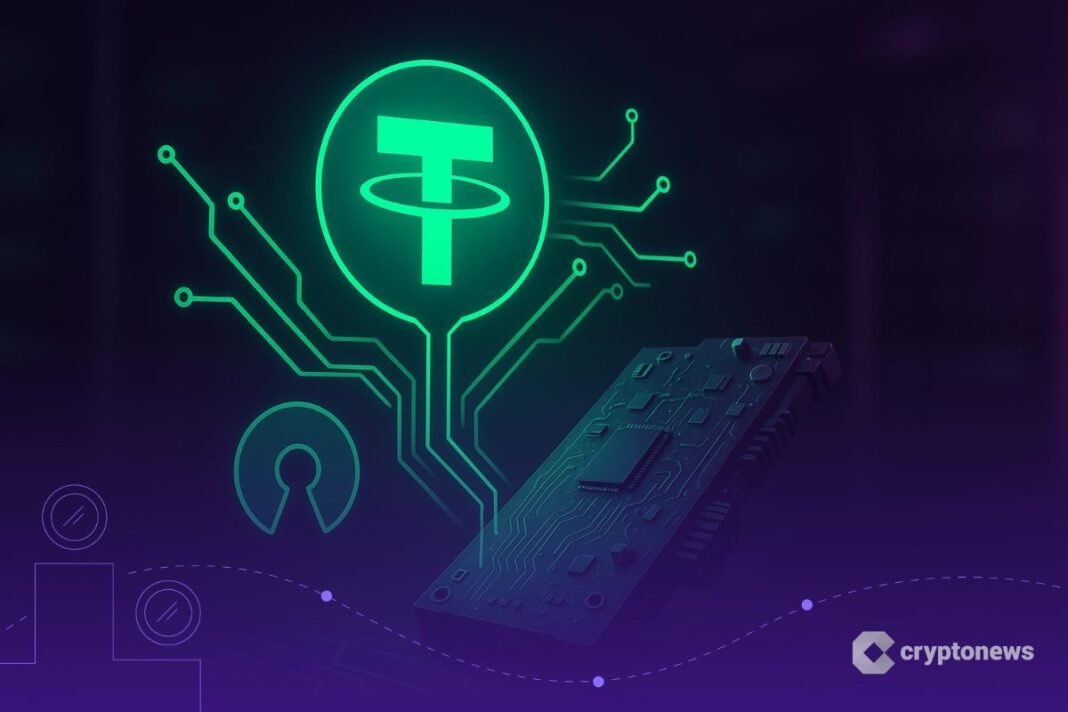Key Takeaways:
- Tether is ready to open-source its Bitcoin Mining Working System (MOS) to democratize entry to mining infrastructure.
- The software program is constructed to help all the things from small-scale DIY rigs to giant industrial mining farms.
- The initiative may spur a wave of recent entrants, and assist decentralize mining and strengthen community resilience.
Tether, the issuer of the USDT stablecoin, is making ready to open-source its Bitcoin mining working system, a transfer that would shake up the mining business and decrease boundaries for brand spanking new entrants.
Introduced by CEO Paolo Ardoino, the initiative seeks to offer smaller or impartial miners with instruments that usually require costly third-party software program or infrastructure.
The software program, often known as the Mining Working System (MOS), is designed to scale from small, DIY setups to giant, industrial mining websites.
Tether Expands Bitcoin Mining Push with Open-Supply Working System
Ardoino wrote in his publish saying the plans, “Make mining nice once more.”
He mentioned the aim is to scale back dependence on centralized mining software program suppliers and provide a extra degree taking part in area between small miners and publicly listed companies.
Tether’s MOS is constructed with a modular, peer-to-peer structure, making it extremely versatile. It could possibly run on methods so simple as a Raspberry Pi or scale as much as help large mining operations involving lots of of hundreds of machines.
Tether will work in direction of open-sourcing its Bitcoin Mining OS (MOS).
A horde of recent Bitcoin mining corporations will be capable to enter the sport and compete to maintain the community secure.
No want anymore of any third celebration hosted software program.
MOS will create an excellent taking part in area lowering the…— Paolo Ardoino
(@paoloardoino) June 9, 2025
The system already helps a variety of mining {hardware} and energy setups, together with air-cooled and immersion-based container designs.
This transfer may have broad implications for the mining sector. Publicly listed mining corporations have traditionally had an edge as a result of entry to higher software program instruments and infrastructure.
Tether’s determination to launch MOS may shut that hole, empowering smaller operators to enter or scale up their participation in Bitcoin mining.
One other angle to this transfer is power. Ardoino believes that extra small and mid-sized companies that generate their very own electrical energy, comparable to by photo voltaic, will start utilizing extra energy to mine Bitcoin.
Whereas no launch date for the open-source model was supplied, the announcement provides one other layer to Tether’s rising involvement in Bitcoin mining and infrastructure.
The corporate has beforehand invested in mining operations and power initiatives, particularly in Latin America.
Miners Face Tight Margins as AI, Hashrate Wars Reshape Submit-Halving Atmosphere
Tether’s push into open-source AI and mining software program comes at a time when Bitcoin miners face one of the vital difficult post-halving environments to this point.
Because the April 2025 halving reduce block rewards to three.125 BTC, many public miners have shifted from HODLing to promoting.
In accordance with TheMinerMag, over 40% of mined BTC was offloaded by 15 companies in March alone. Some, like HIVE and Bitfarms, offered greater than their complete month-to-month manufacturing, an indication of rising operational pressure.
The stress is mounting because the Bitcoin community’s hash price hit a document one sextillion hashes per second in April, and mining problem reached a brand new excessive of 121.51 trillion in Might, after a 6.81% soar.
Bitcoin’s hashrate hits all-time excessive, however miners are promoting extra BTC as income plunges post-halving — can the community’s safety surge outpace monetary pressures?#Bitcoin #Mininghttps://t.co/D7931KDQW2
— Cryptonews.com (@cryptonews) April 17, 2025
In the meantime, miner income in March plunged 50% year-over-year, dropping to only $1.2 billion.
The hashprice, a key metric of mining profitability, has barely recovered, hovering round $54 per PH/s.
To remain afloat, some companies are shifting to AI. HIVE has already reported stronger earnings from AI workloads than crypto mining, prompting heavier funding in compute infrastructure.
Others, like Cango, have gone all-in on mining, producing over 950 BTC throughout April and Might after exiting legacy operations in China.
Tether’s AI initiative may help that development, mixing decentralized compute with native crypto funds and providing a brand new path for miners eyeing survival by diversification.
On this new chapter, miners might have greater than {hardware} to maintain their edge.
The publish Tether’s Open-Supply Mining OS May Shatter Obstacles – Will Public Miners Lose Their Edge? appeared first on Cryptonews.
